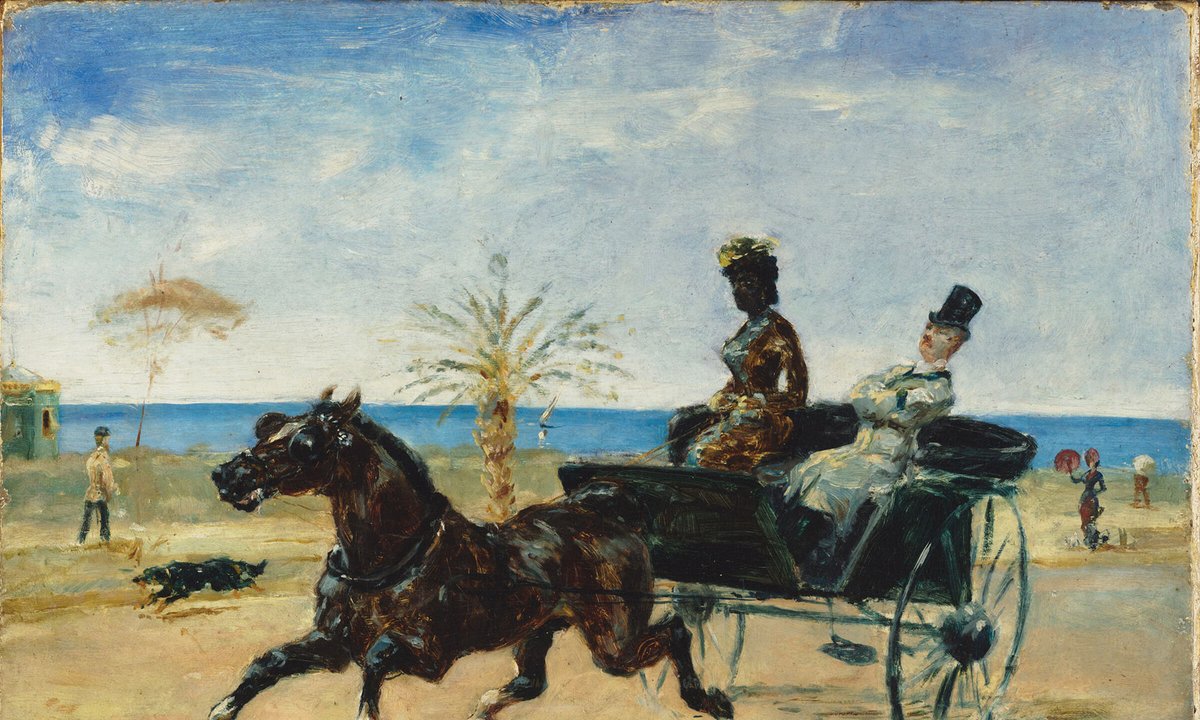Henri de Toulouse-Lautrec’s painting from 1881 depicting a Black woman driving a horse-drawn carriage along the seafront presents a mystery surrounding her identity, always referred to as The Black Countess (La Comtesse noir), her story shrouded in secrecy.
The elegantly attired woman exudes a sense of authority, maintaining a rigid posture as she holds the reins firmly while her horse races briskly by the seaside, trailed by a loyal dog.
Recent efforts focus on unveiling the identities of Black figures in historical artworks, often leading to surprising revelations that prompt a fresh perspective on the pieces. This holds true for The Black Countess (a title that may not be used today), as new research sheds light on the captivating life of the woman who captured Toulouse-Lautrec’s imagination.
An American art historian at Boston College delved into the painting, housed in the nearby Fogg Museum at Harvard Art Museums, and successfully identified the subject as Countess Anne Justine Angèle de Peiger, also known as Delva, a native of Haiti. His meticulous investigation, detailed in October 2019, calls for a more comprehensive exploration of her life. The Art Newspaper took on the challenge posed by Wunsch.
Delva’s life unfolds as a tale of controversy: encompassing three marriages, financial extravagance, rumored involvement in the sex trade, and a reputation as the lesbian partner of a notorious courtesan.
Born in Port-au-Prince, Haiti, on April 12, 1857, Delva was the daughter of Count Jean Pierre Damien Delva de Dalmarie, a military general known to be one of the wealthiest individuals on the Caribbean Island post its independence from France in 1804. The family relocated to France around 1860 following the emperor’s overthrow. At the age of 16 in 1873, Delva wed Raymond de Peiger, a civil engineer, and bore a daughter named Henriette a year later. Raymond’s demise in 1883 in Quito, Ecuador, marked a tragic turn in her life.
The year 1881 saw the young Toulouse-Lautrec, residing in Nice, capturing Delva’s image in his painting. Already renowned as the “Black Countess,” Delva was a prominent figure in the Riviera social circuit, frequently gracing extravagant gatherings that garnered media attention.
The identification of Delva in the Toulouse-Lautrec artwork was bolstered by its title (Nice, La Comtesse Noire) documented in a 1926 catalog by Maurice Joyant, a close associate of the artist. Press accounts referring to her as La Comtesse Noire and notarial records from that period further corroborated Wunsch’s findings.
The encounter between Delva and Toulouse-Lautrec in Nice in early 1881 coincided with a dramatic incident in her life when she narrowly escaped an acid attack aimed at her companion in a theater box. This event intertwined her fate with Laure Hayman, a crucial figure in Delva’s narrative.
Whether Toulouse-Lautrec shared a personal acquaintance with Delva or merely observed her as she rode along the Nice coast remains uncertain. Reports of Delva’s suicide attempt by poisoning in 1882, extensively covered in publications like Le Petit Parisien, further heightened her enigmatic aura.
Subsequent mentions of Delva in a scandalous book underscored her tumultuous life, detailing her marital woes and alleged involvement in unconventional relationships. Her third marriage to journalist Eugène Destez in 1918, coincidentally in Auvers-sur-Oise where Vincent van Gogh spent his final days, marked another chapter in her complex journey.
Delva’s demise in Paris on March 26, 1929, at the age of 71, concluded a life marked by intricacies and hardships, a stark contrast to the initial portrayal captured by Toulouse-Lautrec’s brush, hinting at the extraordinary path she would traverse.
